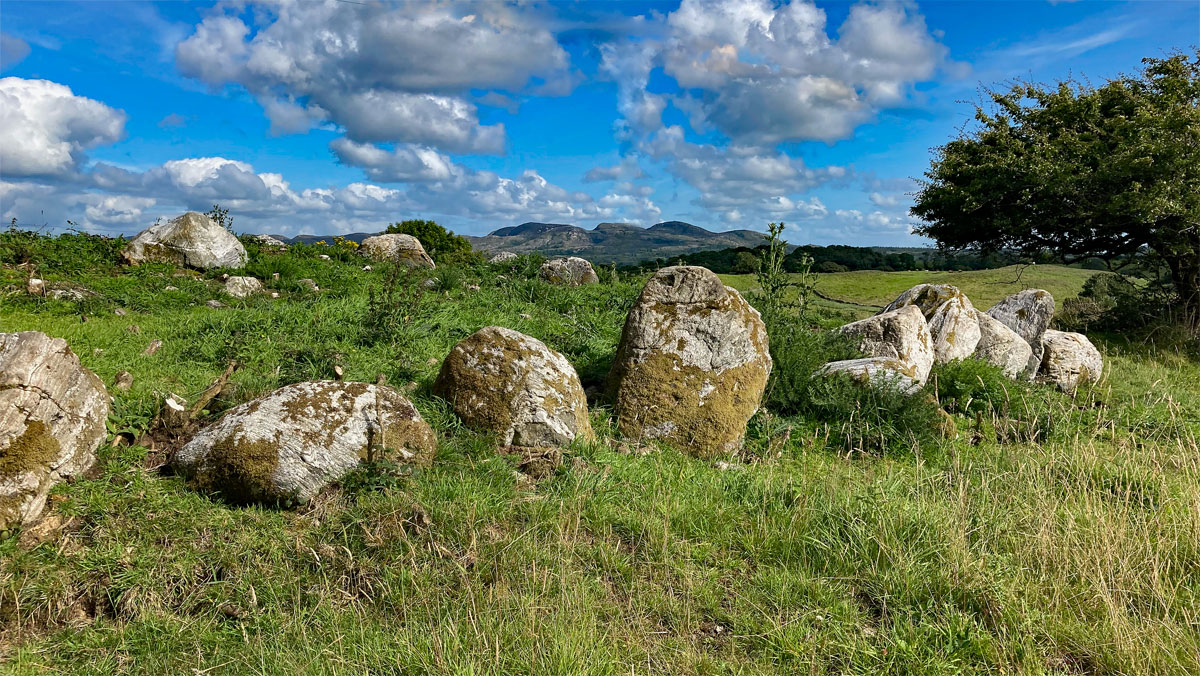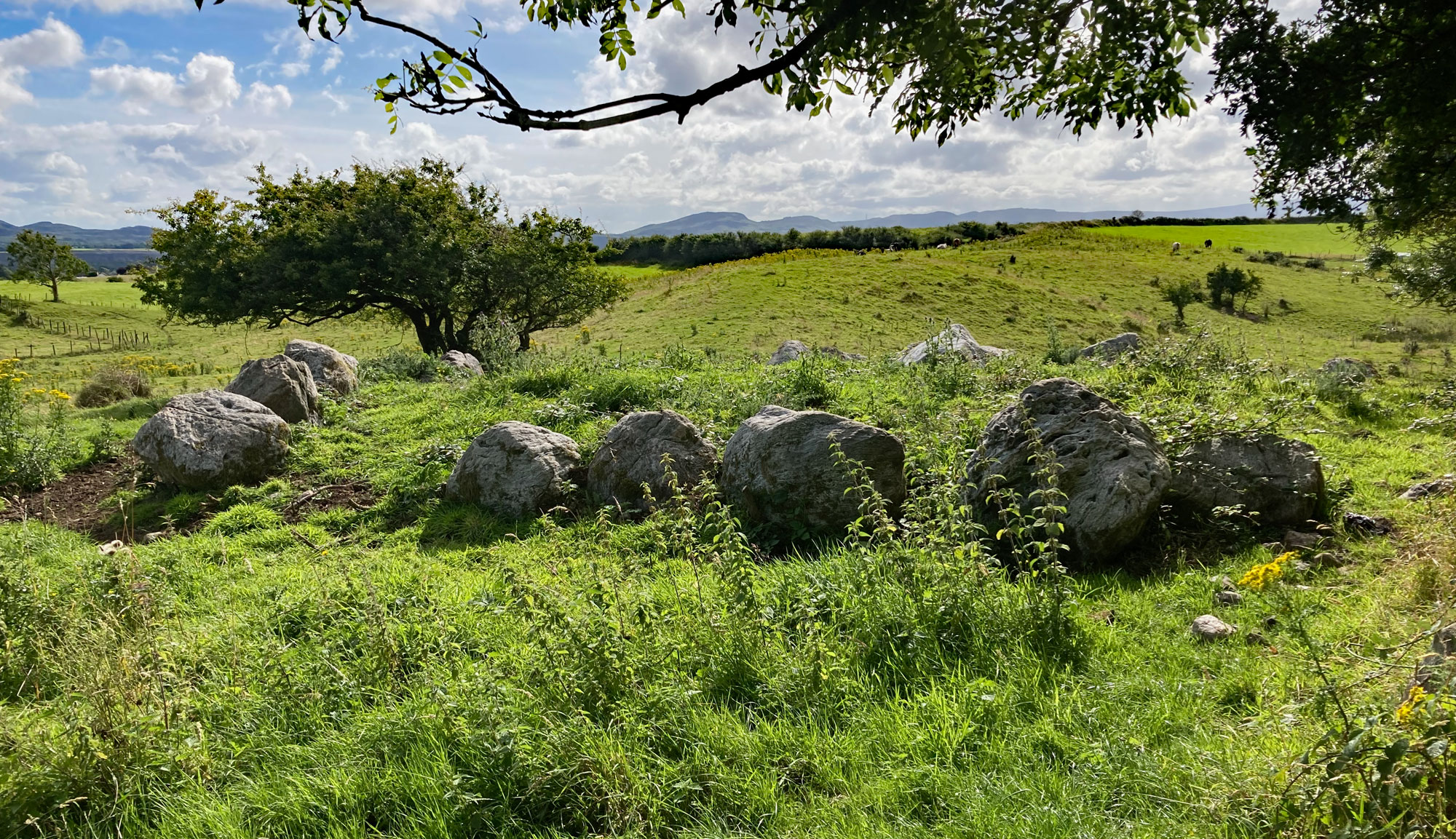Circle 32
Circle 32 sits on top of a small hill or knoll at Lachtareal and commands wide views of the surrounding countryside and mountain tops, many of which have similar neolithic monuments on their summits. The monument is largly complete, with a ring of twenty-seven boulders measuring almost 15 meters in diameter.
The ring of stones is constructed with gneiss boulders, which are all glacial erratics, transported here to Carrowmore by the retreating glaciers at the end of the most recent ice age. In local folklore the cailleach named Garavogue conveys the stones; she is a powerful neolithic goddess who transported the stones to Carrowmore in her white apron. The source of the gneiss boulders from the valleys in the Ballygawley mountains six kilometers to the south east of Carrowmore and shown in the photograph above.
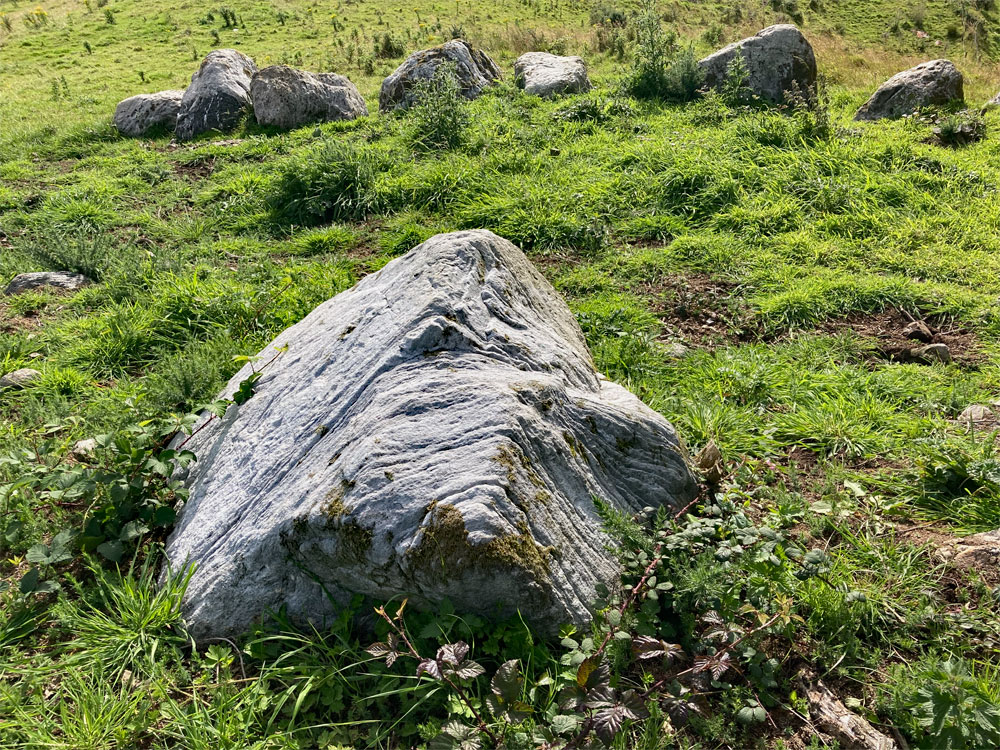
The gneiss boulder circle surrounds an earthen and stone platform or tertre, which was about a meter above the surrounding ground level. The platform is being eroded by cattle where there is a break in the circle to the south. The beautiful pyramidial split boulder near the centre of the circle is the capstone the burial chamber.
Circle 32 is located on private property at the back of a cottage and was heavily overgrown for many years, which gave the monument some protection from the cattle who are currently eroding the platform. Several large boulders in the fence at the back of the adjacent cottage garden are probably the remaining stones from Circle 31.
Other Monuments
A large cairn is reported to have stood on the summit of Lachtareal Hill, about 100 meters to the east of here. It was destroyed when the huge quarry pits on the south and east of Carrowmore were opened in 1904 to provide gravel for the foundations of a new factory at Sligo docks. Three thousand cartloads of gravel were quarried here and carted down hill to the docks in Sligo town. This huge gravel pit was one of the locations chosen by Sligo County Council as an ideal place to use as a landfill rubbish dump in the 1980's
According to Petrie, Circles 33, 34 and 35 were completely destroyed about fifteen years before his 1837 visit. There is no evidence of them today. Modern research, such as that of Stefan Bergh tends to discount many of Petrie's suspect or destroyed boulder circles reducig the maximum number of monuments at Carrowmore to around forty. The satellite monuments are found close to the rim of a large undulating plateau in the centre of the Cuil Iorra peninsula.
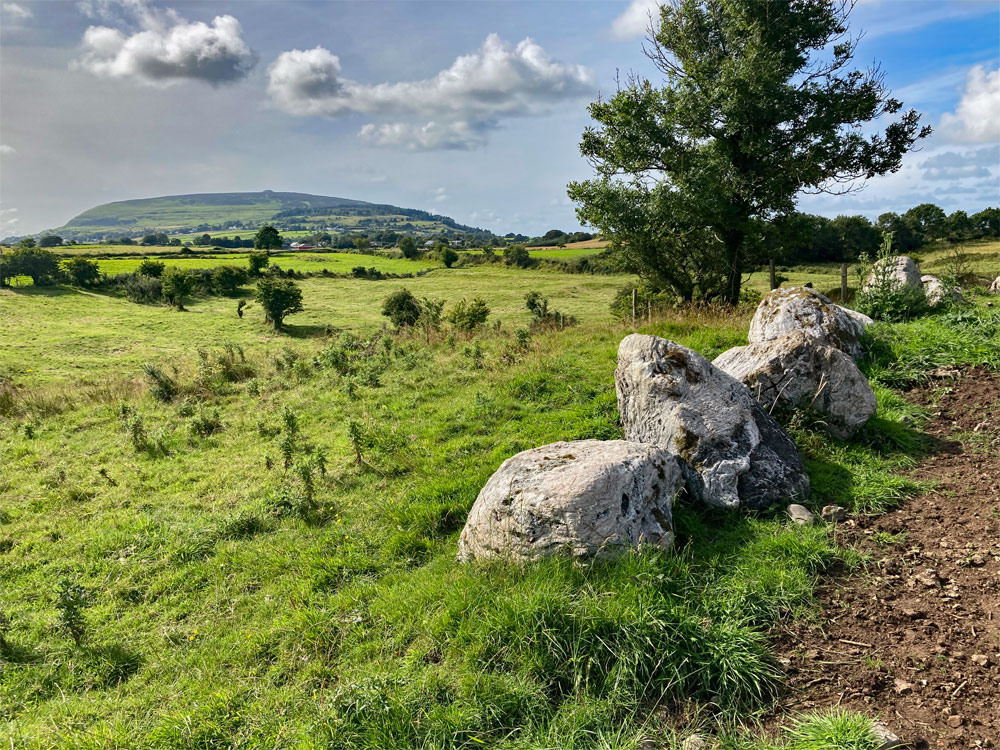
Circle 36, located about 300 meters southwest of Circle 32, is fairly complete. There are 49 stones in a large ring about nineteen meters in diameter. Some of the stones on the west side of the ring have fallen out due to quarrying. This impressive circle is unexcavated and on private land.
Immediately beside Circle 36 to the east is a mound of stones about three meters high and 10 meters in diameter. Reports say bones and charcoal were found by a tenant, which may indicate it is man-made.
Site 32: - Borlase
No. 32 (1).
Situated a few paces to the South of XLI (dolmen-circle). "This circle is nearly perfect, but the cromleac is broken. The stones are of small size, and the diameter of the circle 42 feet." - Petrie.
No. 32 (2).
Adjacent to the two last (cairn). "Within the memory of the old people (living in 1837), there was a remarkable cairn adjacent to these (last two) circles, which gave name to the hill Leachtareel. It was destroyed many years since to build walls, and not a trace of it remains."
- Petrie.
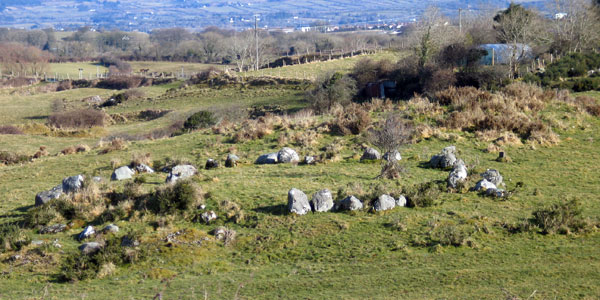
Circles 33 and 34
Borlase, following Petrie's descriptions, reports two more monuments, Nos. 33 and 34, both situated to the south of Circle 32 (two dolmen-circles).
"Of these circles but slight vestiges remain. They were destroyed about fifteen years before 1837 by Mr. Walshe's tenants."
- Petrie.
Circle 35
Borlase reports the existance, again following Petrie's description, of a third destroyed monument, Circle No. 35.
"Situated still further to the south." (dolmen-circle (several others)). "This circle has been destroyed, but the cromleac remains, with the table-stone displaced.
There were other circles in the vicinity which were also destroyed."
- Petrie.
"A few stones are still scattered about here and there."
- Wood Martin.

